On the trail of black tucupi in the Rupununi and Roraima
Memories of a journey from Boa Vista to Yupukari village in the Rupununi region of Guyana, to see how black tucupi is made for a BBC article. The photos taken by the fabulous photographer Tina Leme Scott are too good to not share.
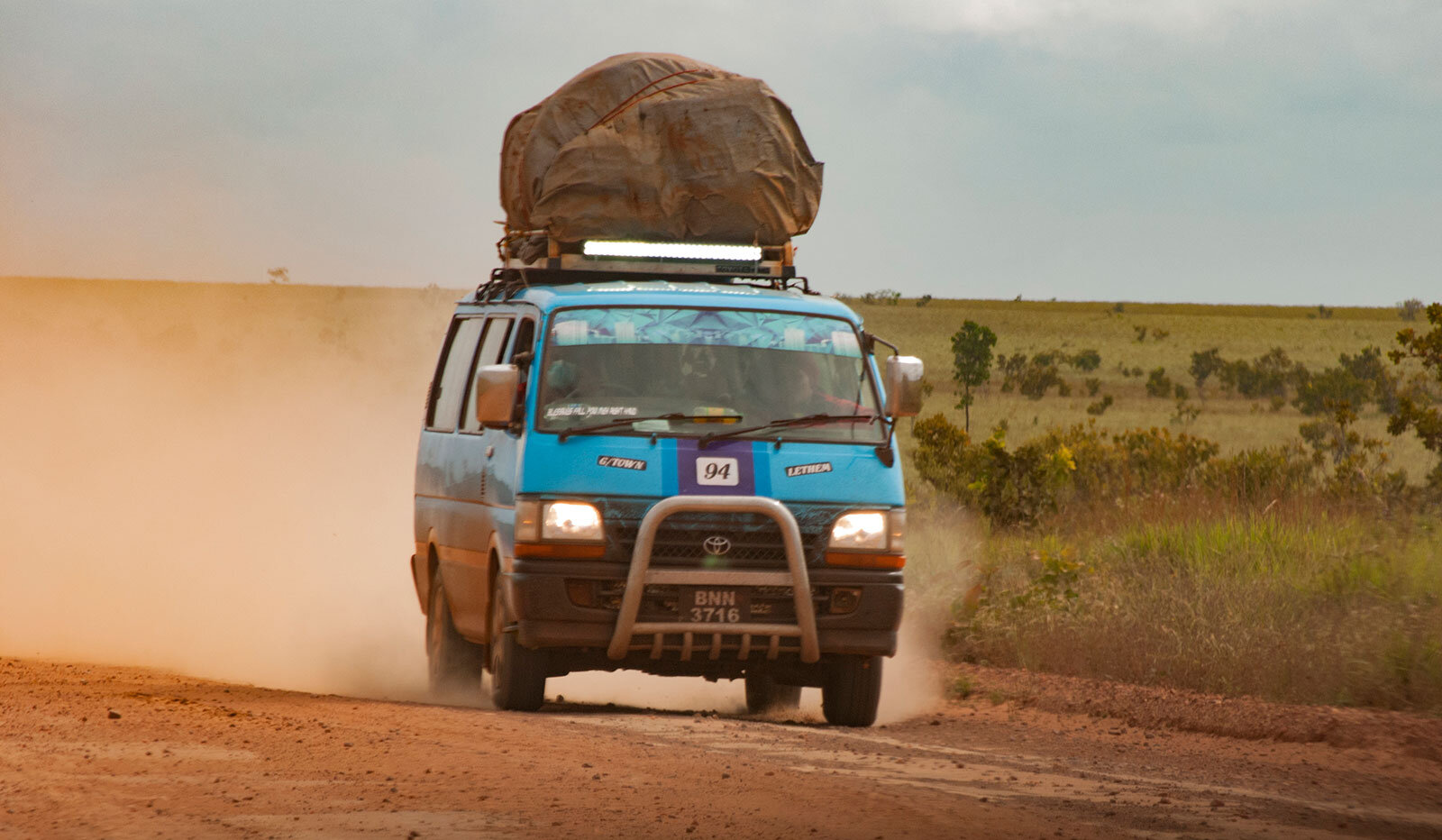
These minibuses carry passengers on the dirt road from Georgetown, Guyana’s capital, to the border crossing with Brazil in Lethem. It takes about 12 hours on a good day and sometimes can’t be done at all, when the rain turns the road into a mudbath. The road is an assault course of pot holes so it’s quite a sight to see them bouncing by at what feels like 100mph. Photo © Tina Leme Scott
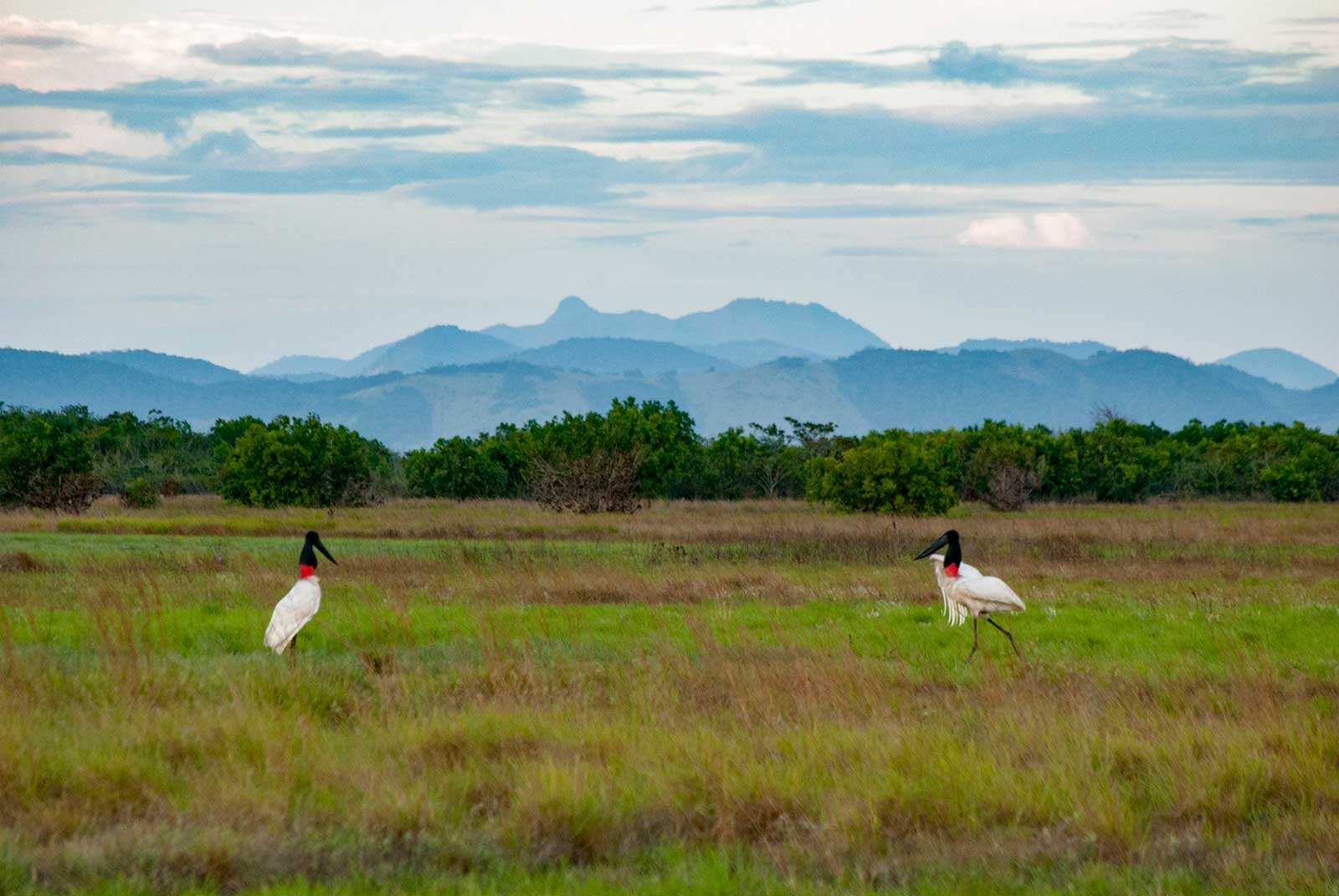
For much of the year the Rupununi savannah turns into a wetland. It was thought to be the location of the mythical Lake Parime – a contender for the location of Sir Walter Raleigh’s fabled city of El Dorado. Explorers including Raleigh travelled this region in search of it. Photo © Tina Leme Scott

Tony is the taxi driver taking Tina and I from the border to Yupukari. Instead of the 4X4 I was promised, he turned up in a battered Toyota Carina, with a “Tony” sticker on the front windscreen and Kenny Rogers blaring out of tinny speakers. I spotted a machete as I slung my rucksack in the boot. “For killing snakes,” he said, and I’m not sure what made me more nervous, the thought of snakes or him wielding a machete. Photo © Tina Leme Scott

A look of triumph on Tony’s face at having successfully crossed this bridge. Photo © Tina Leme Scott
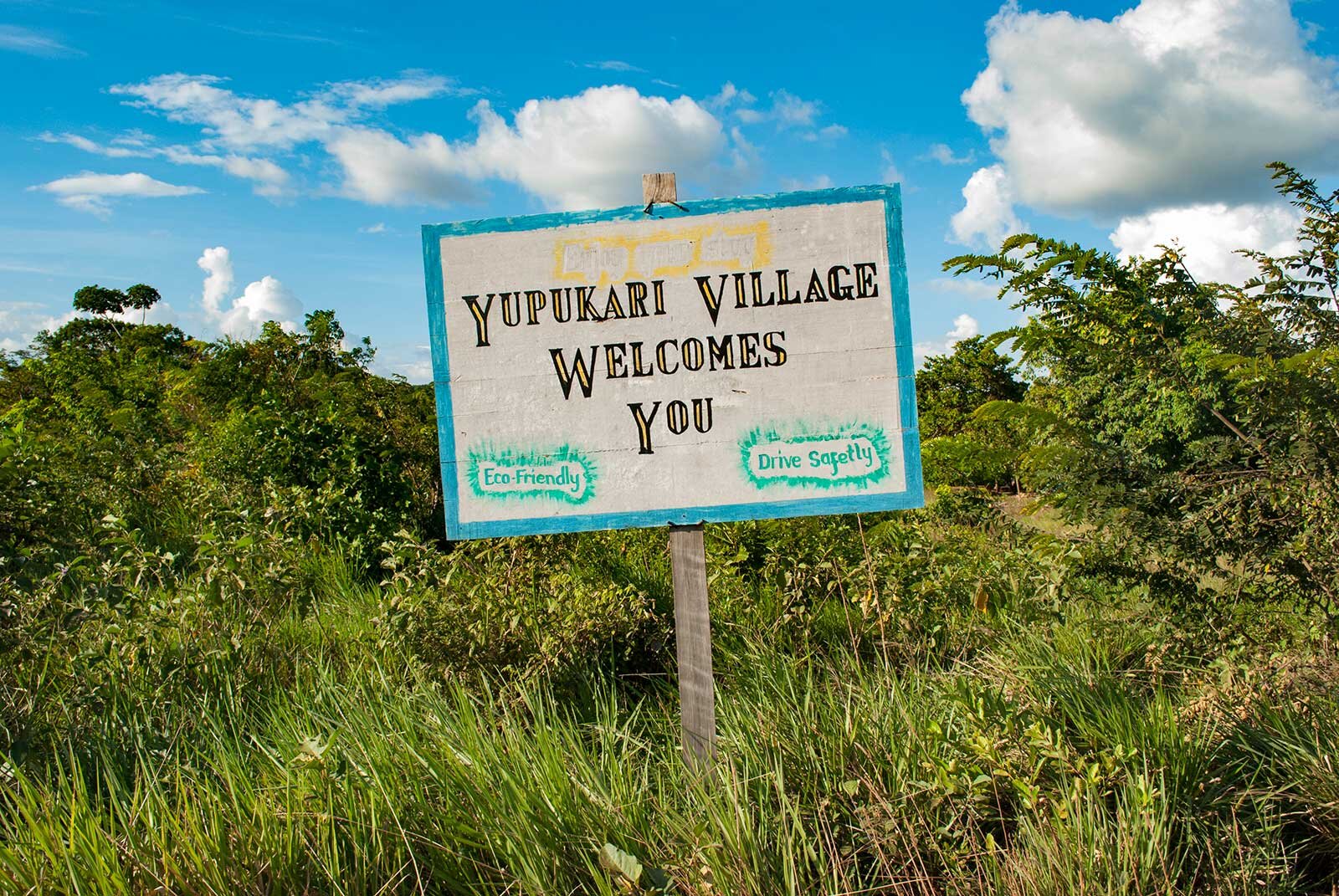
The locals at Yupukari are Macuxi – one of nine indigenous peoples in Guyana. The Macuxi also live over the border in Brazil and the common language that connects them on both sides of the border is Macuxi but here at Yupukari everyone speaks English too, and some of the children aren’t being taught Macuxi, sadly. Photo © Tina Leme Scott
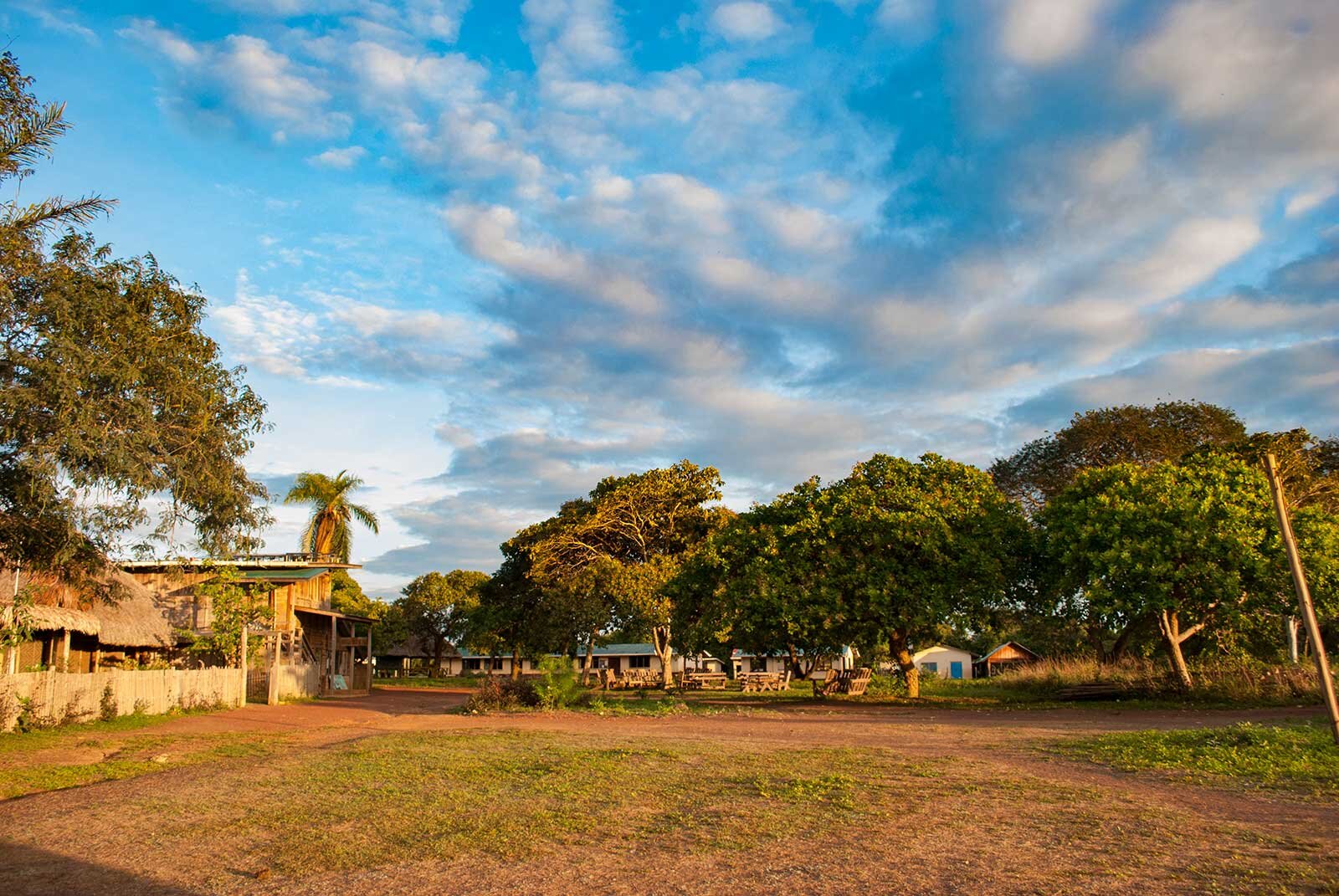
The trees in the village were hung with bright red cashew apples, like baubles at Christmas. Photo © Tina Leme Scott

Our host at Caiman House, an eco-lodge in the centre of the village. Caiman House is one of a dozen or so eco-lodges run by indigenous peoples in the interior wilderness of Guyana. Photo © Tina Leme Scott
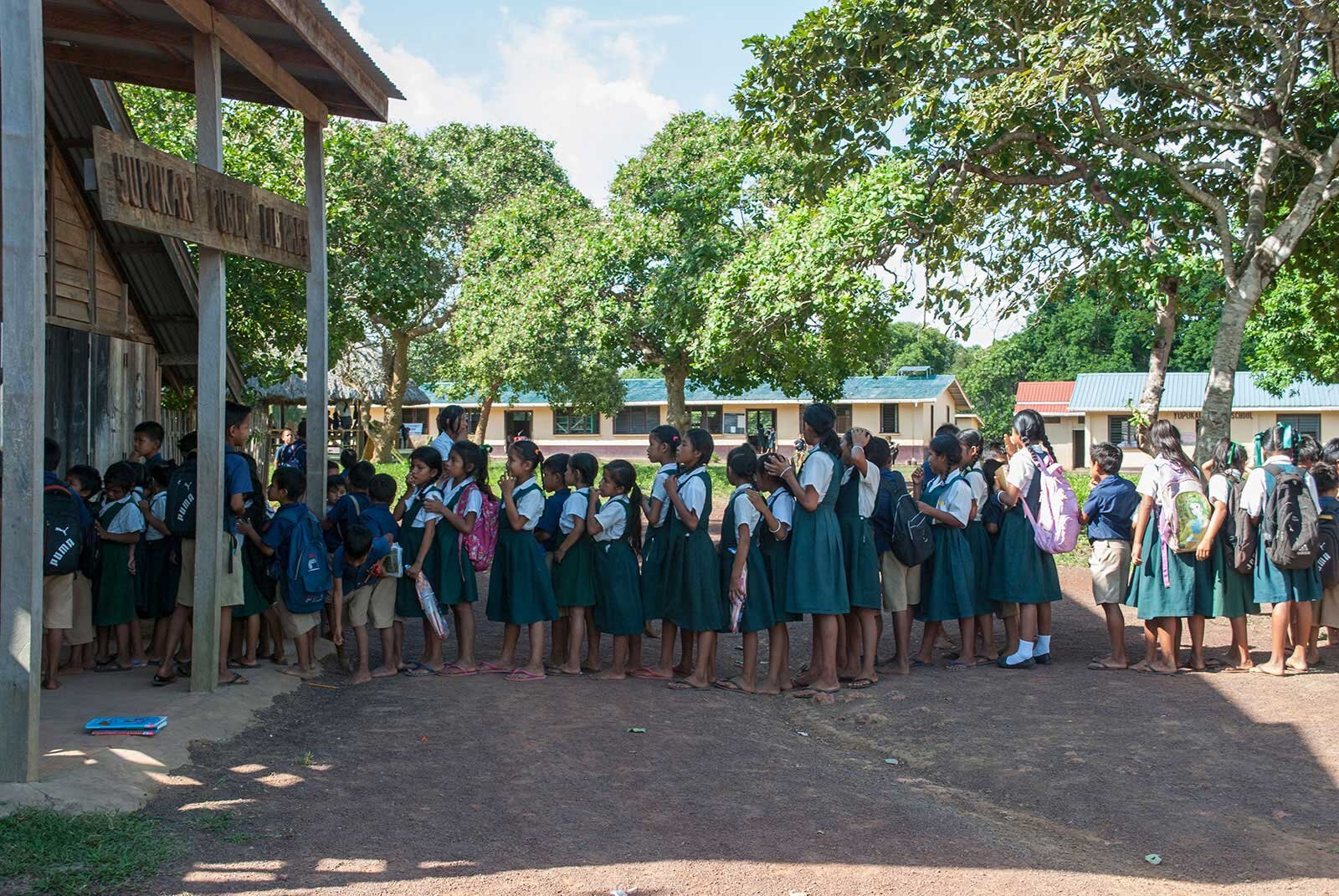
We were lucky to visit on the day of a “reading rodeo” with children visiting from the surrounding villages. Photo © Tina Leme Scott
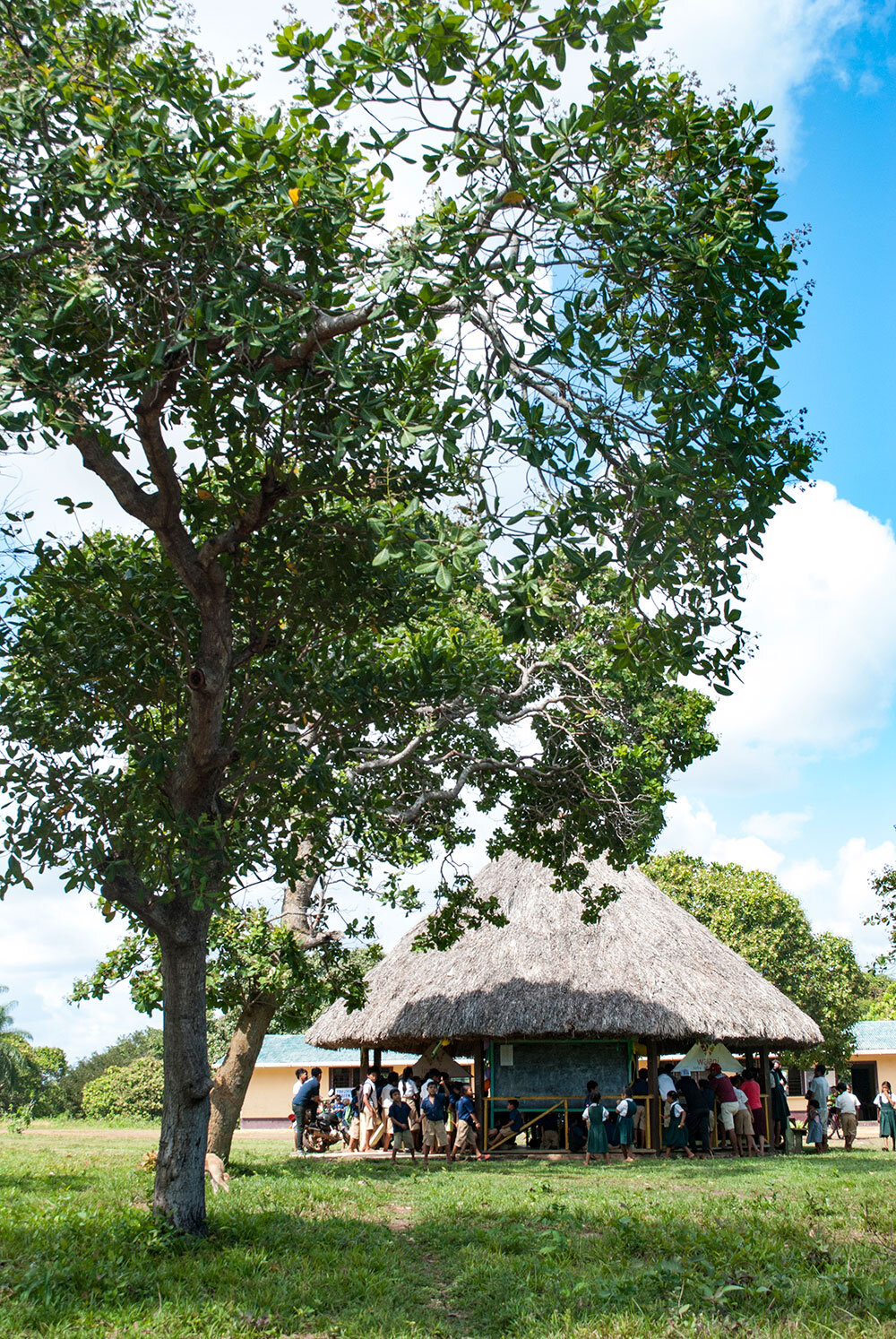
Photo © Tina Leme Scott
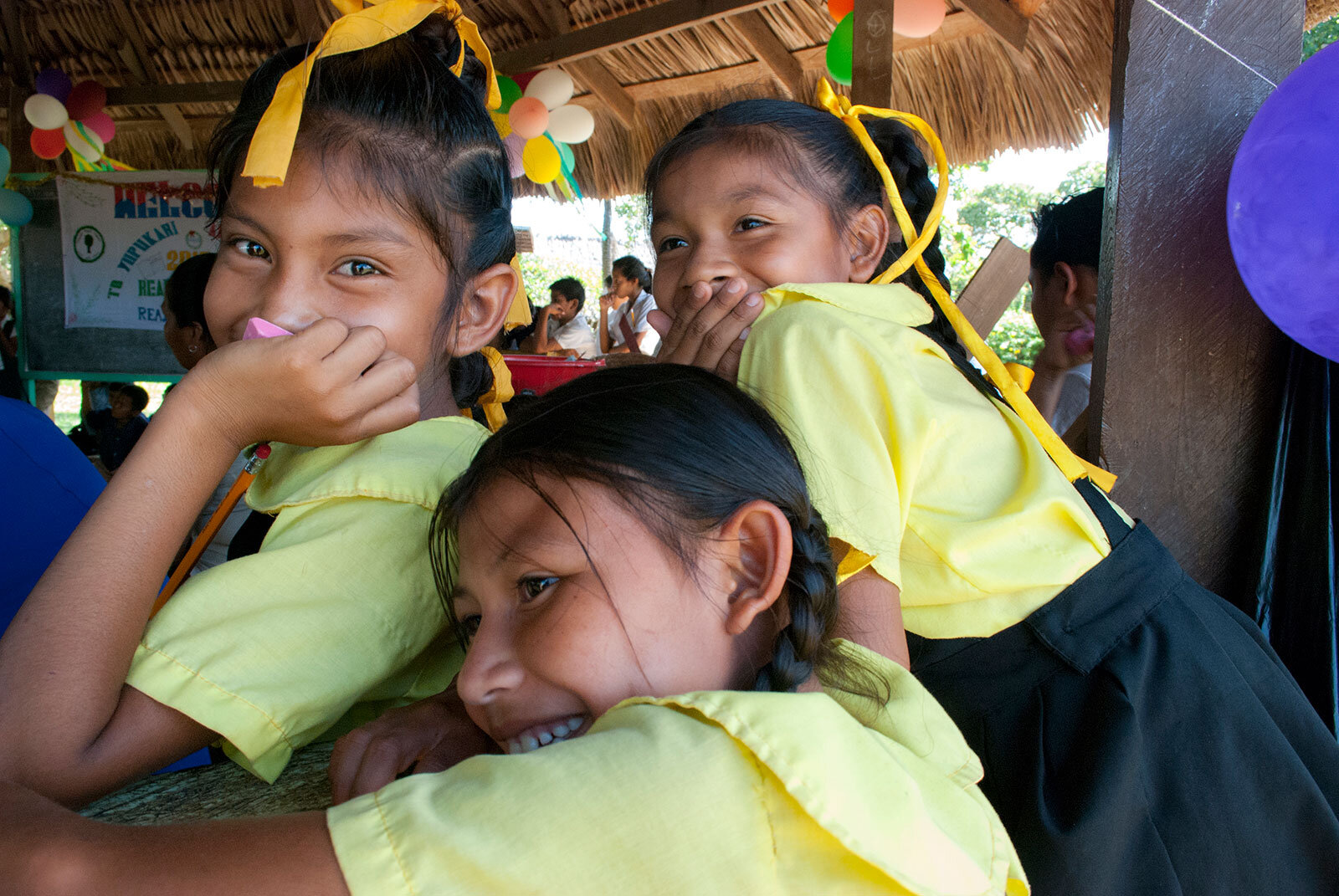
Photo © Tina Leme Scott

The manioc plantation is a short walk outside Yupukari village. The women are harvesting about 100 kilos of the root vegetable to show us the process of making black tucupi. It’s a staple part of their diet, though less so now than it used to be as instant noodles and processed chicken takes its place. Photo © Tina Leme Scott
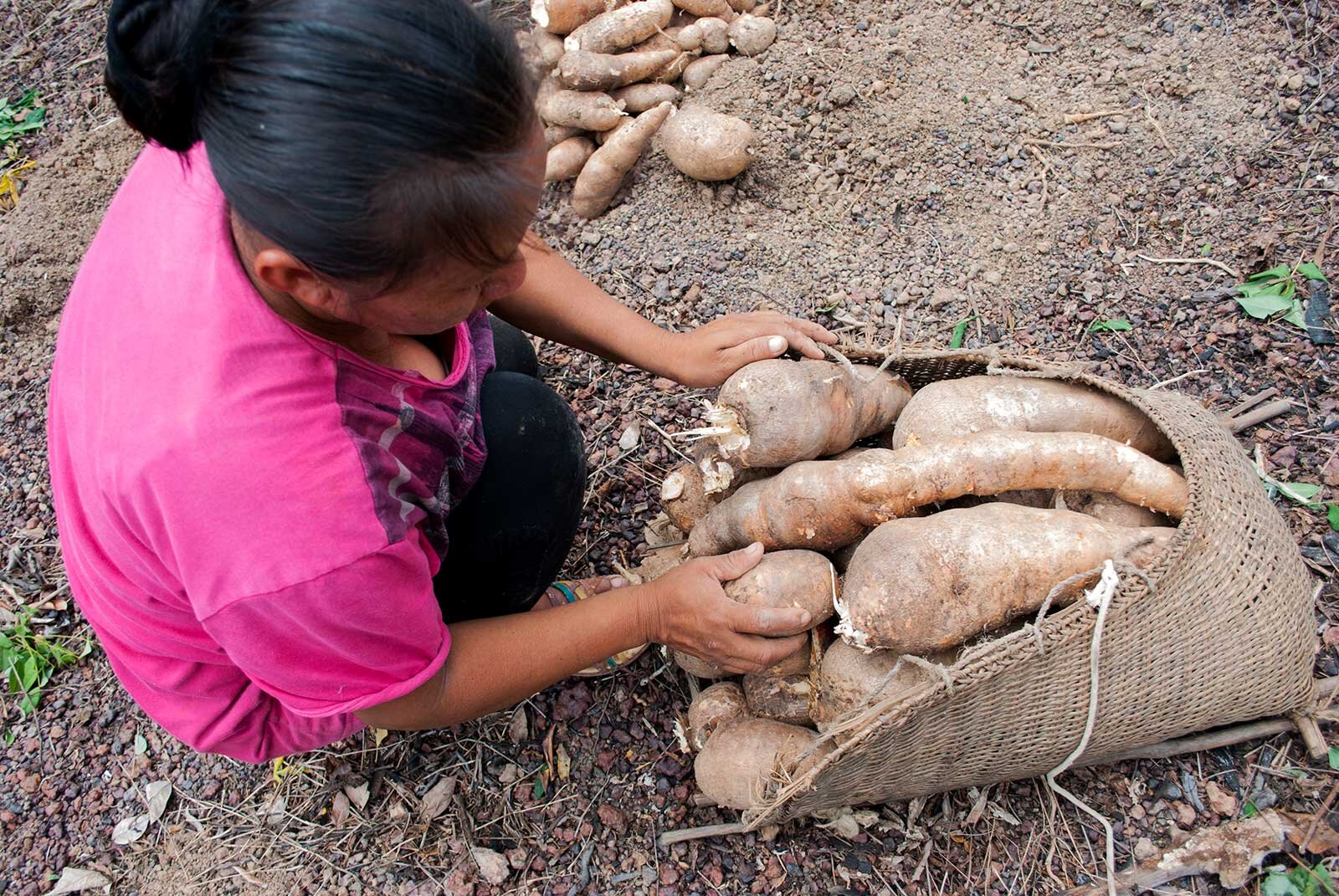
Photo © Tina Leme Scott
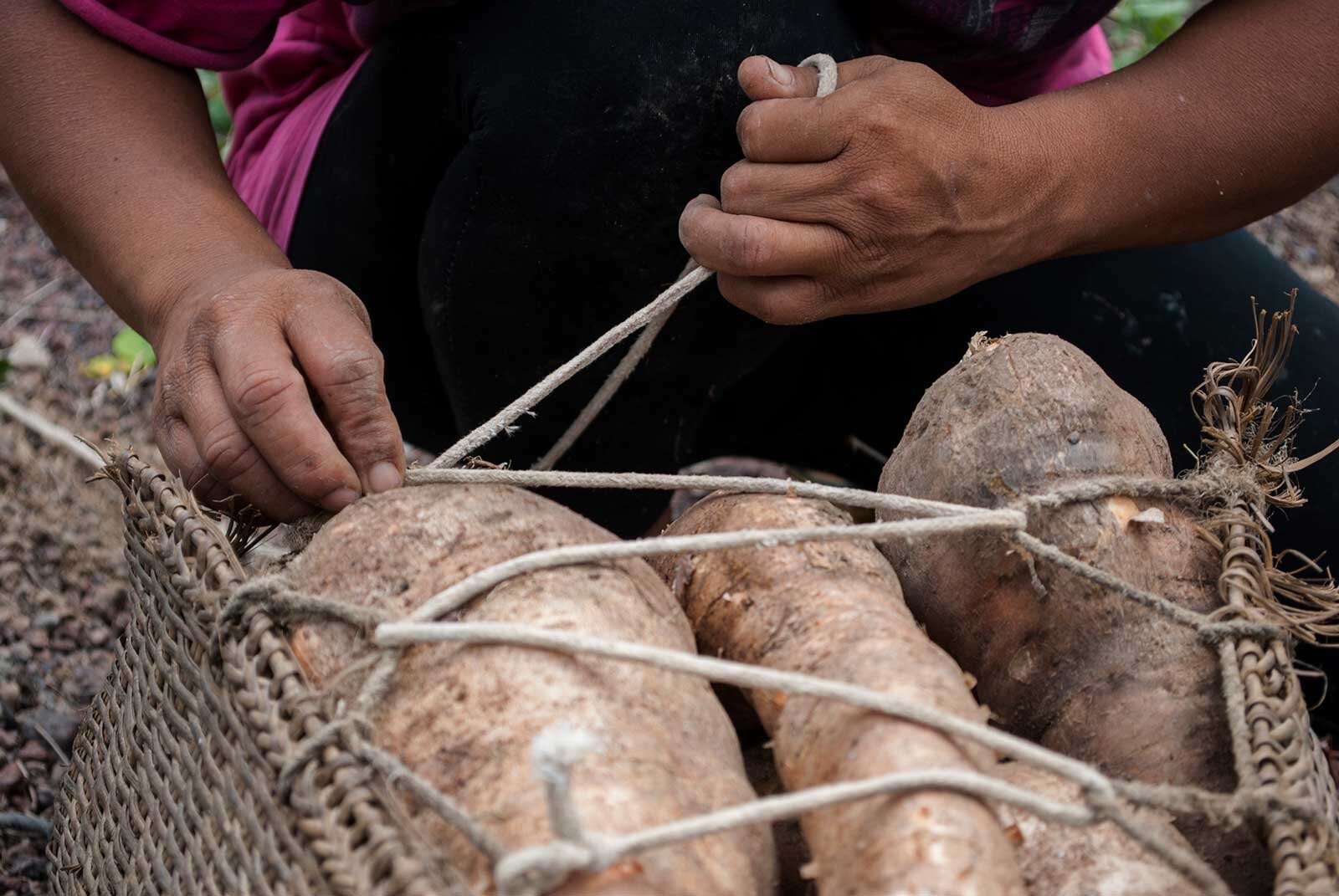
Photo © Tina Leme Scott
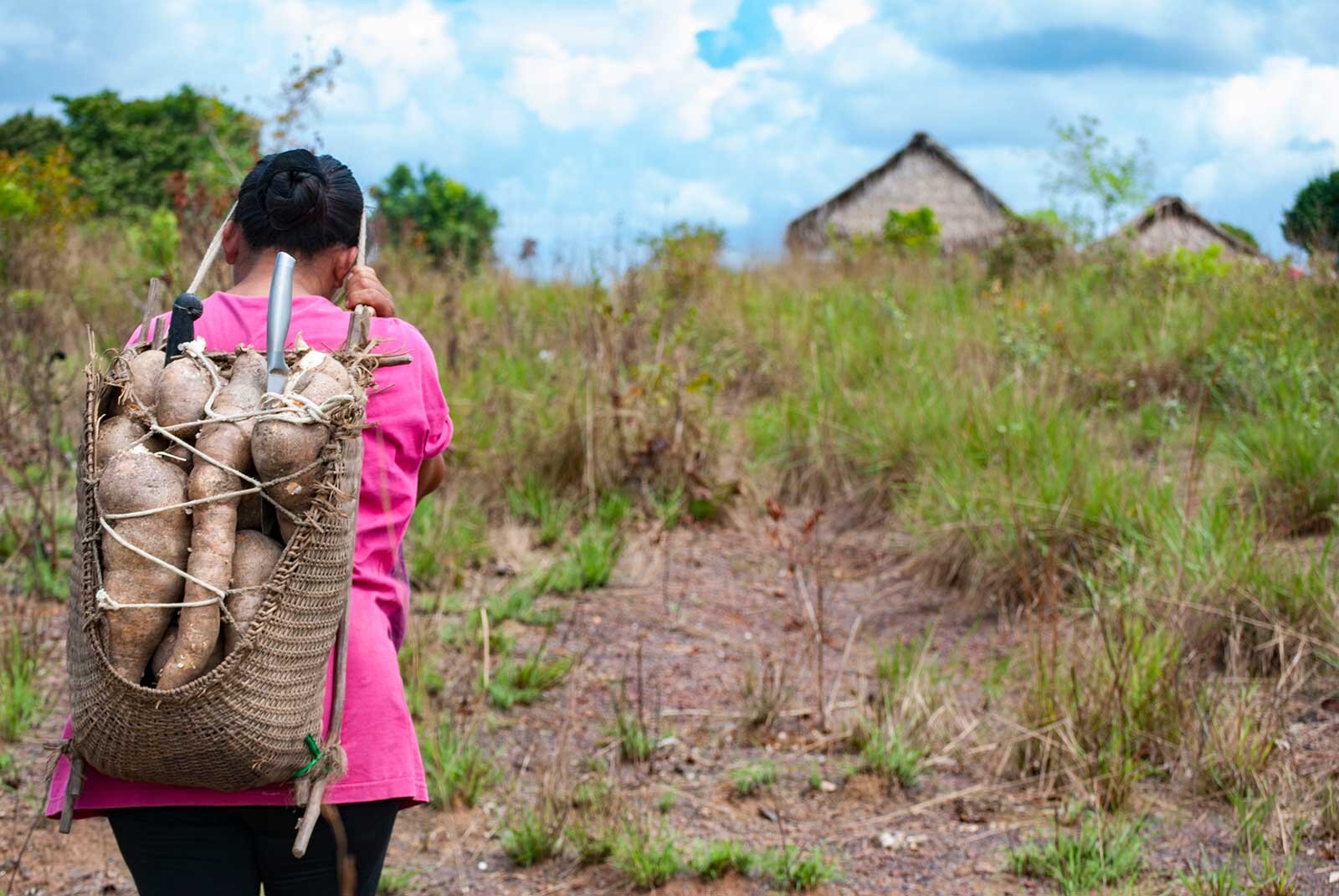
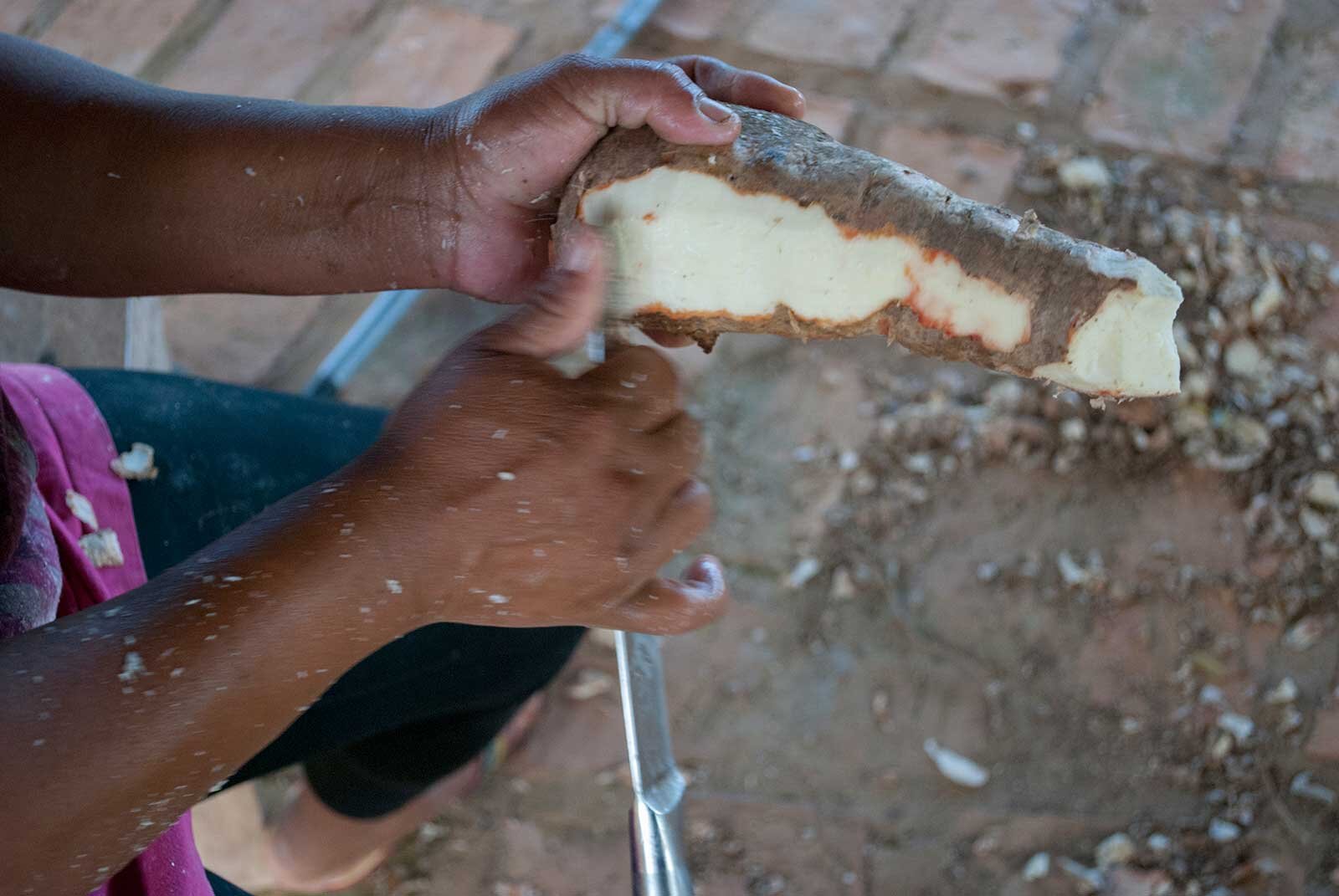
Back in the village, the process of making black tucupi begins. It’s going to take a couple of days all in, and is work traditionally done by women. First up, peeling the manioc. Photo © Tina Leme Scott

Next up, grating it. I can barely look at this photo without thinking about bleeding knuckles. Photo © Tina Leme Scott

The grated manioc is then stuffed into a plaited palm tube called a matapi in Guyana or a tipiti in Brazil. The Macuxi word is tingi I am told, which meaning anaconda. It’s a perfect visual metaphor when I see the way the tube is stuffed till it is fat like a snake’s engorged belly and then stretched out thin to squeeze the manioc juice out. Photo © Tina Leme Scott
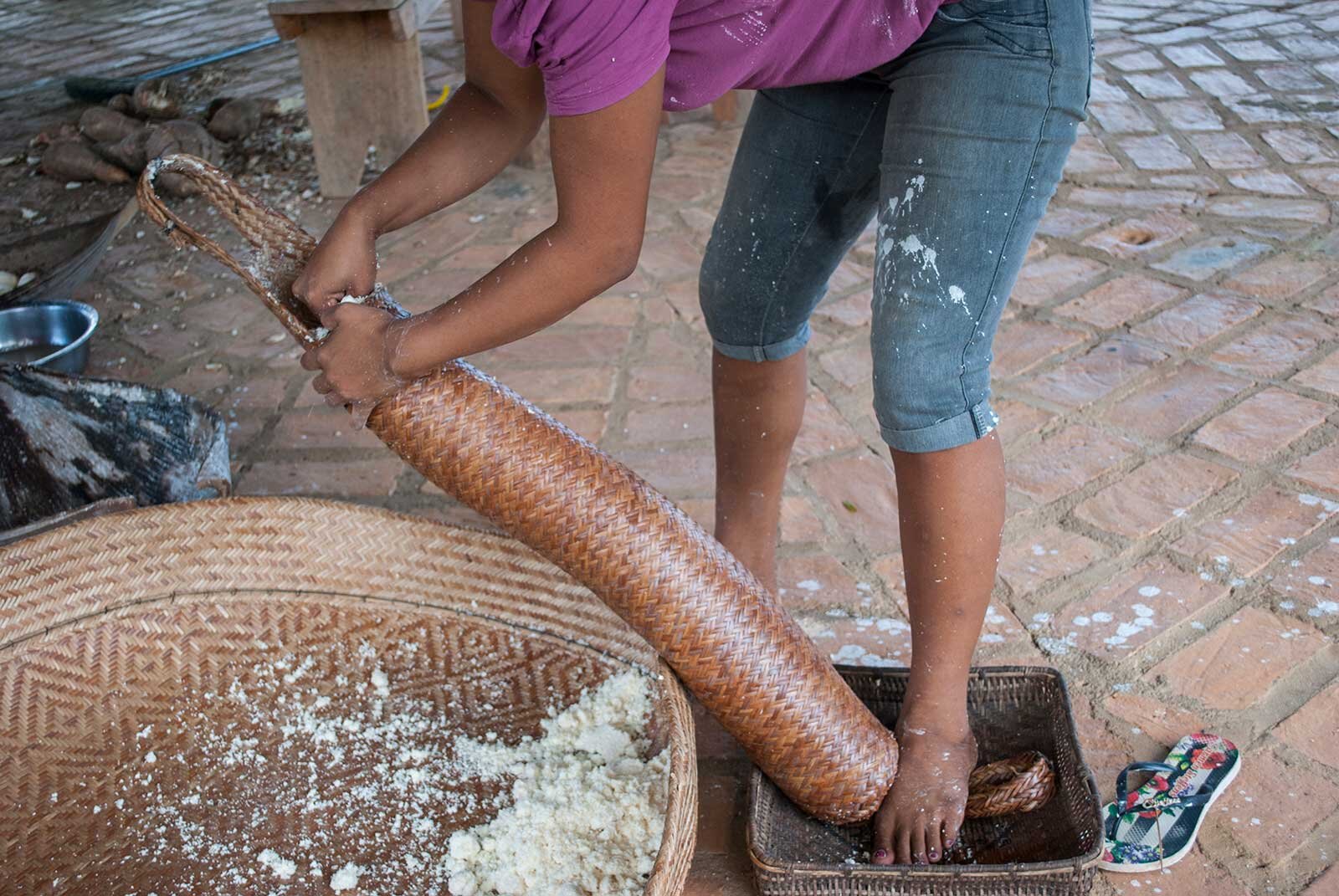
Photo © Tina Leme Scott
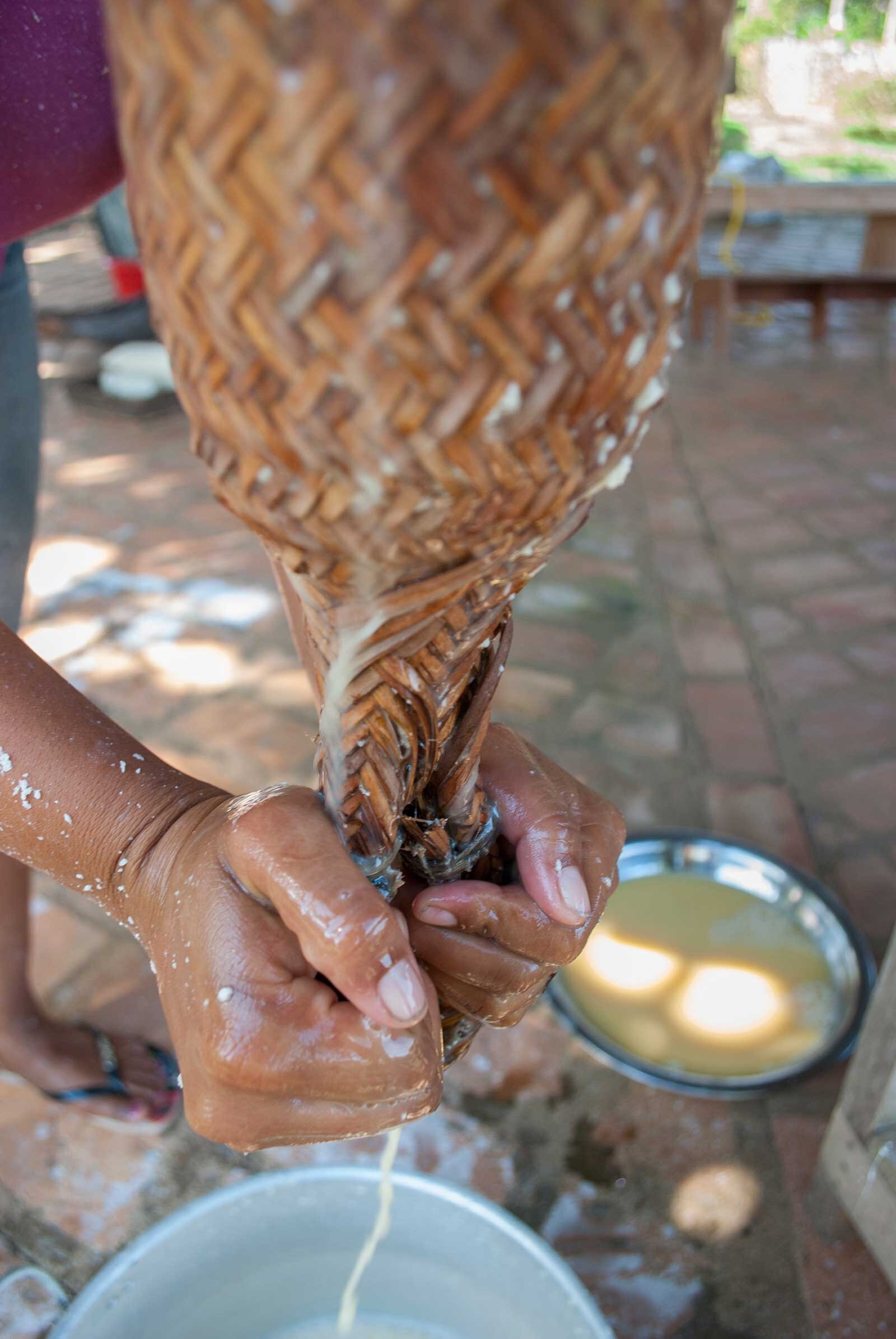
The tipiti is pulled to squeeze the manioc juice out. It is left to sit for a few hours, to decant the starch, a white powder called tapioca that is cooked in a number of different ways. The juice is what we’re after though to make the black tucupi. Photo © Tina Leme Scott
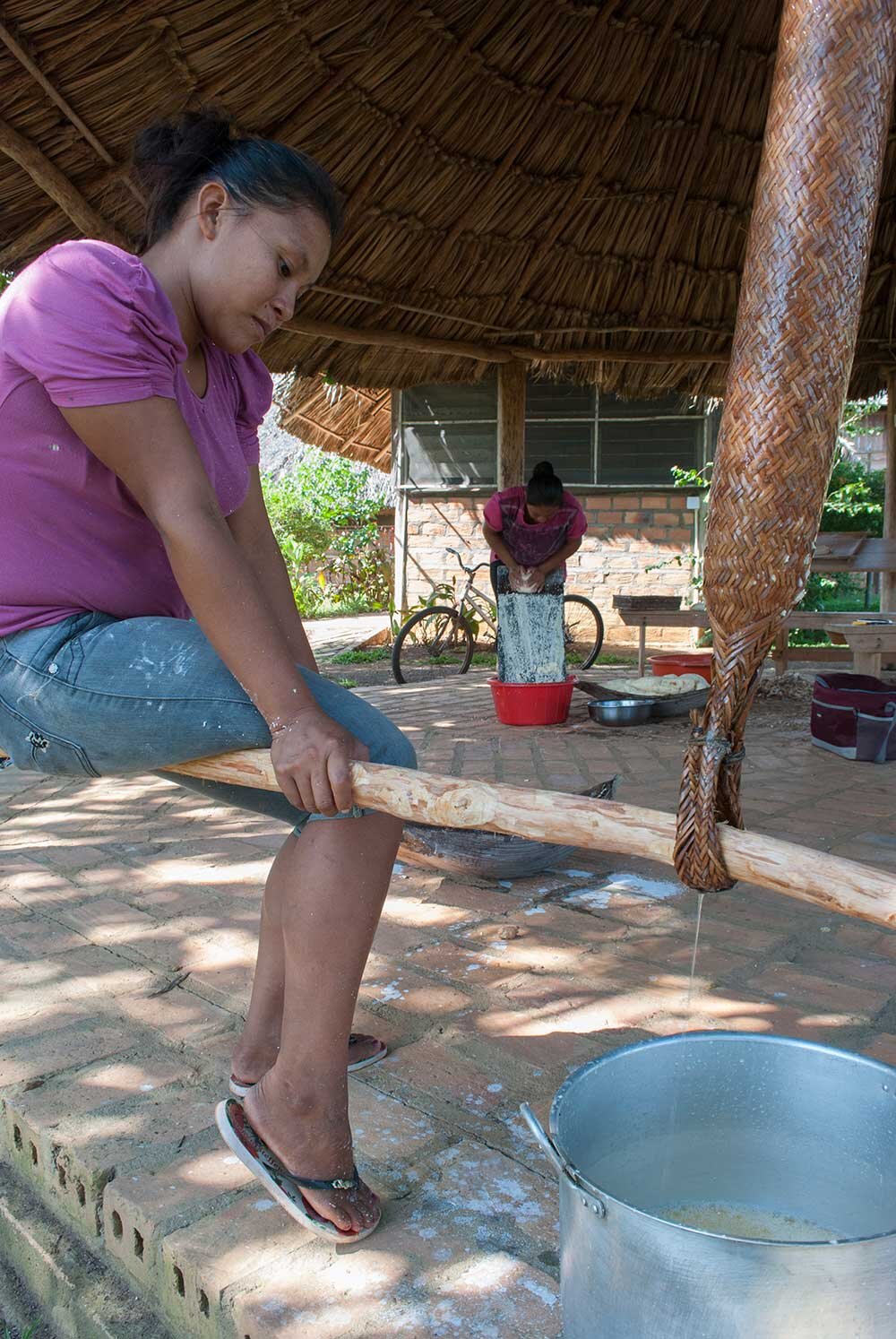
Sitting on this stick to pull the tipiti tight is pretty much the only moment the women take a break from what is back-breaking work. Photo © Tina Leme Scott

The grated manioc slides out of the tipiti in a solid block with a beautiful imprint of the plaited palm. Photo © Tina Leme Scott
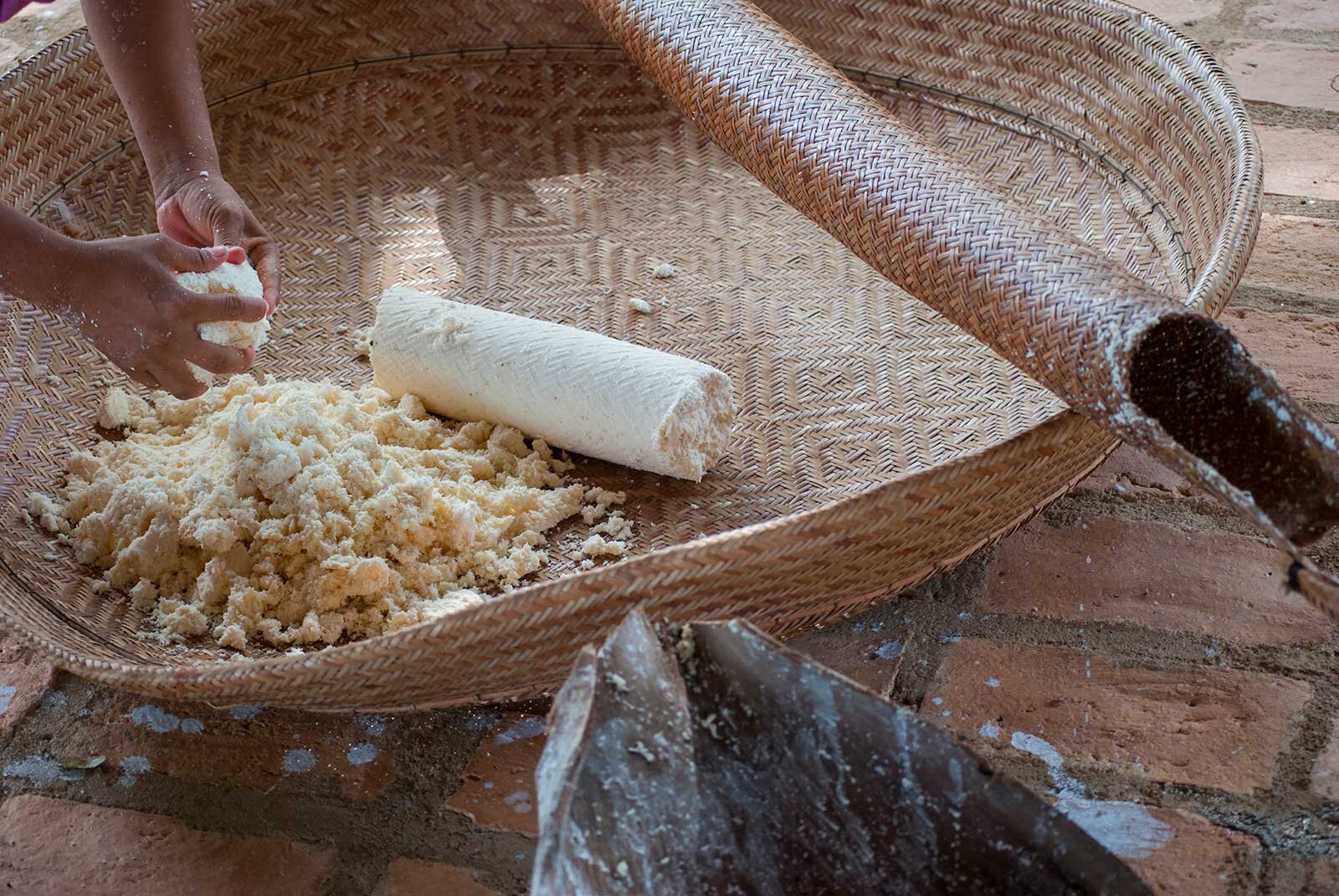
The manioc can be turned into a variety of other foods, but mainly different types of toasted flours as well as beiju or cassava bread. It’s great to see the children watching and taking an interest in this process, an important part of their cultural heritage. Photo © Tina Leme Scott

The grated manioc is broken up and sifted. Photo © Tina Leme Scott
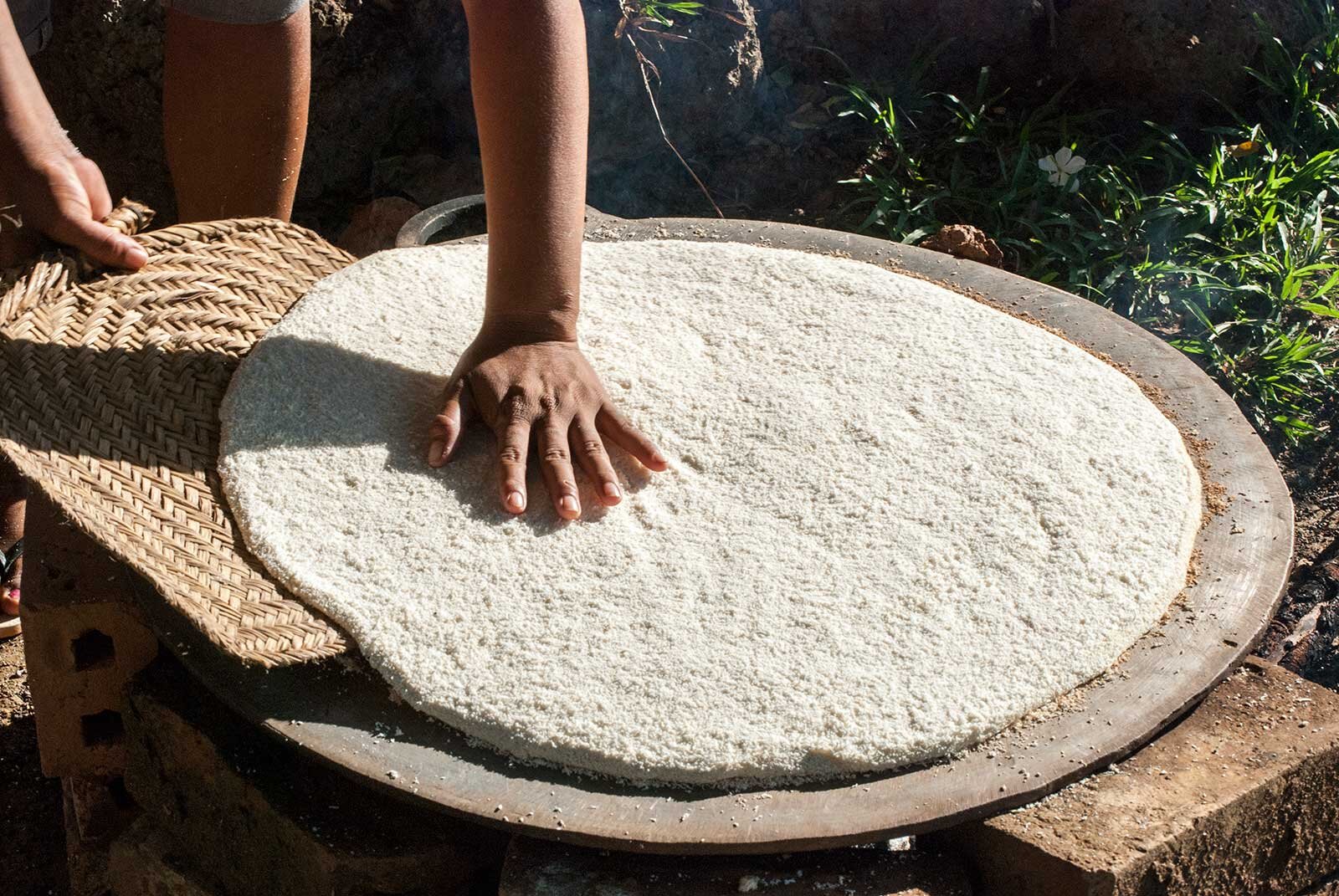
It is then sprinkled onto a hot stone above an open fire and packed down and cooked to make cassava bread (known as beiju in Brazil). Photo © Tina Leme Scott

The manioc juice has been sitting for a few hours and is now ready to be boiled down into black tucupi, or cassareep as it is known in Guyana. The cauldron is placed on an open fire and the liquid will simmer down from around 40 litres to 1 litre. It’s afternoon by now, having harvested the manioc that morning, and in some communities the women carry on into the night to get it done. Photo © Tina Leme Scott
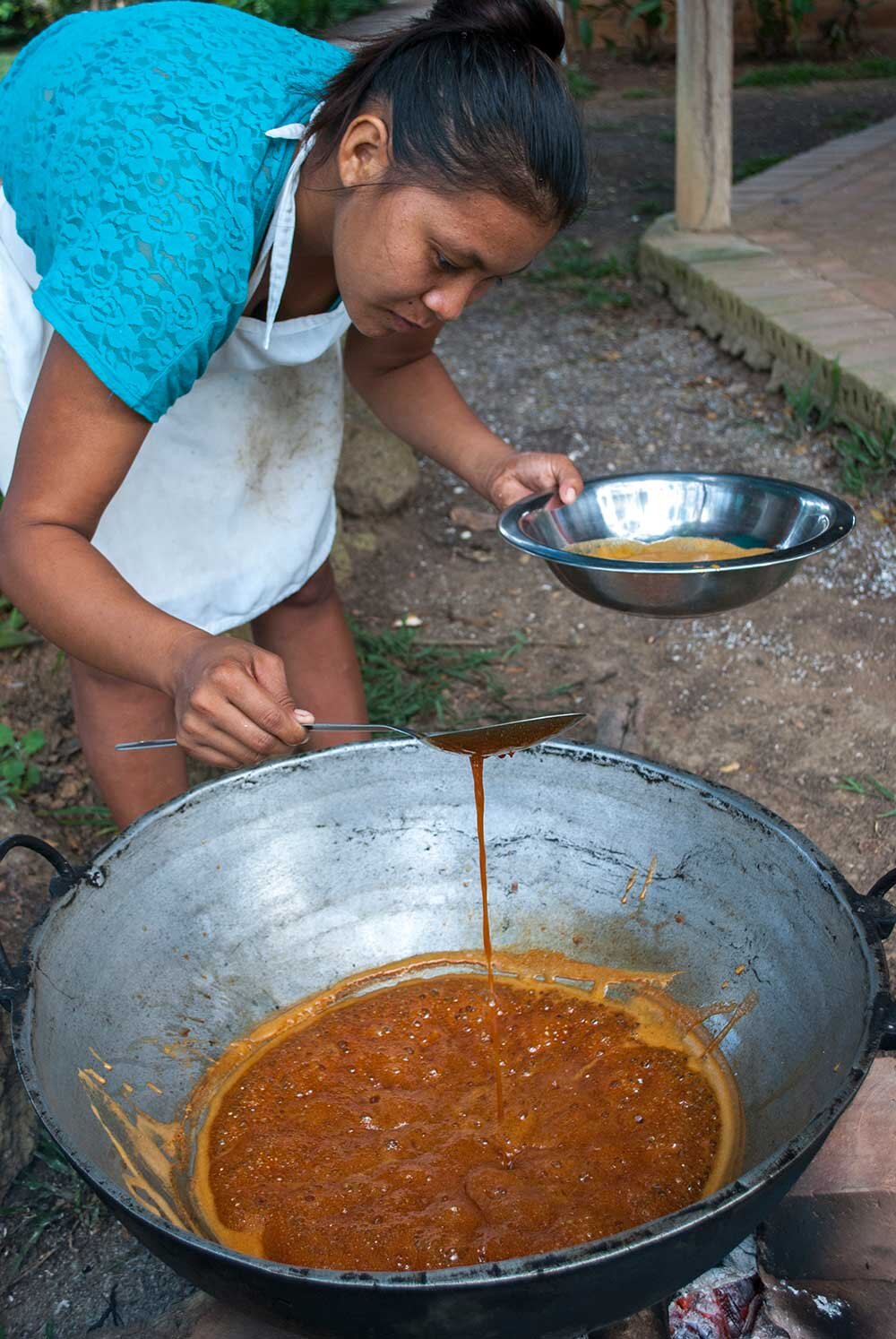
The simmering can take around six hours and the colours change from a mustard yellow to this rusty red and then in the final few minutes to dark brown as the liquid caramelises and thickens. Photo © Tina Leme Scott
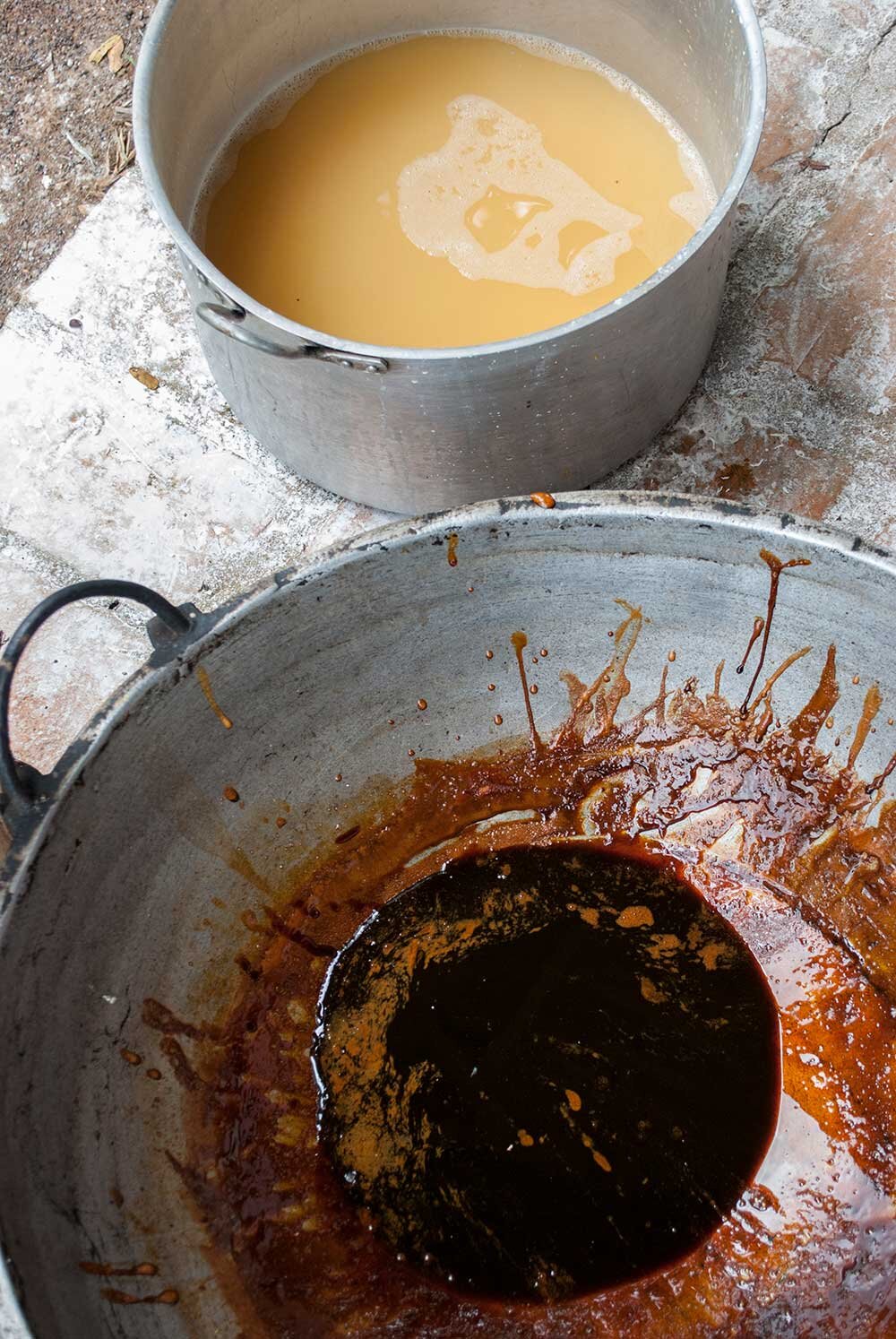
Once it has cooled, we drizzle the black tucupi on the cassava bread. It’s a flavour bomb! Photo © Tina Leme Scott
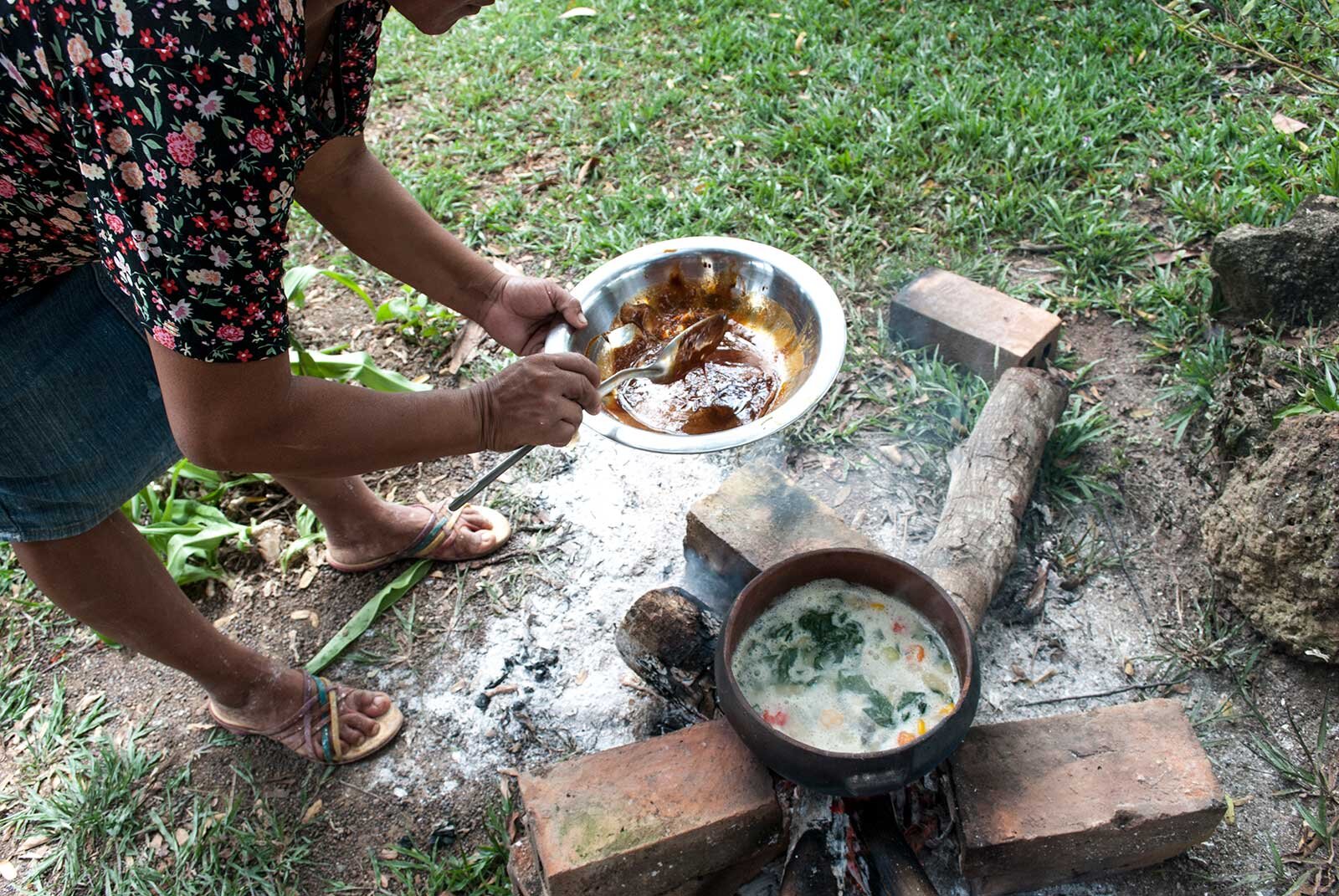
The ladies cook tuma pot - a traditional Macuxi stew which apparently translates as “boiled food in a pot”. It can be made with meat or fish, plus chillies, manioc juice, black tucupi and leaves such as “chicken thyme” or eddo leaf. Photo © Tina Leme Scott

They say the tuma pot can be left for days and still be good to eat. The black tucupi not only adds flavour and colour, but acts as a preservative. Photo © Tina Leme Scott

The tuma pot we had for lunch was made with drum bass – a fish that makes a grunting noise under the water. The farine (bottom left) is a very coarse flour with a delightfully sour flavour, made from fermented manioc. It’s a real tooth cracker though and has to be left to soften up in the juices of the stew. Photo © Tina Leme Scott

After lunch we take a wander down to the river to swim with the Caiman House guide Howard. He points out plants along the way and tells us about “guard plants” - certain species of plant believed to have protective powers. Howard straps one of these plants to the back of his motorbike whenever he goes on a long journey. Photo © Tina Leme Scott
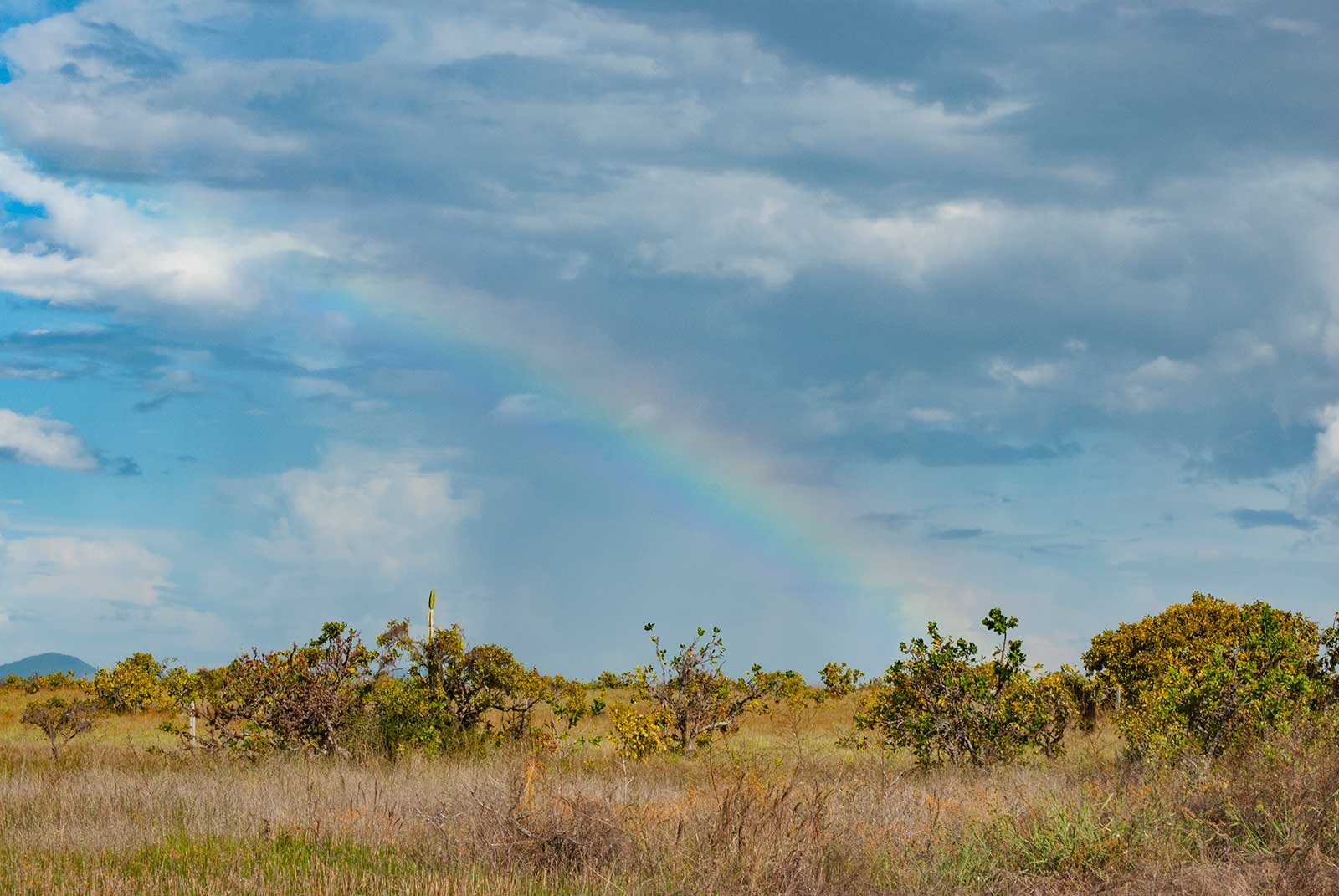
Tony turns up to collect us and we head back over the border to Brazil. The border crossing at Lethem is a surreal experience as the car winds up, round and under a bridge to be spat out on the right side of the road. I wonder how many border crossings there are in the world that involve a change in the side of the road the car drives on. Photo © Tina Leme Scott
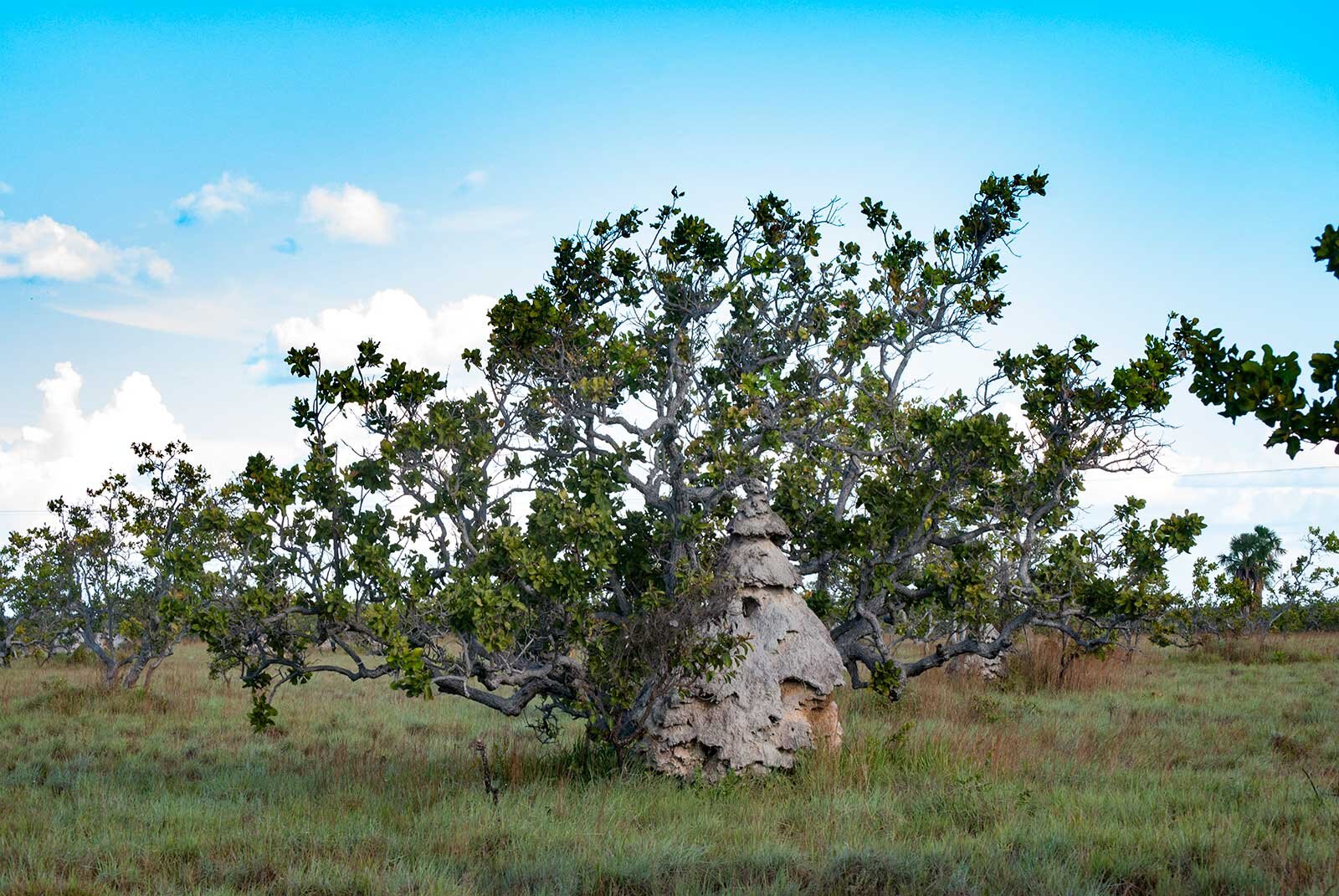
This grassy landscape is the Amazonian savanna, which straddles 1.6 million acres on the triple border of Brazil, Venezuela and Guyana. Termite mounds tower perilously high, like miniature cities with suicidal engineers. The clever ones build their cities around fence posts or tree trunks. Photo © Tina Leme Scott

Near the border with Guyana, in Brazil, we visit another Macuxi community in the demarcated Raposa Serra do Sol indigenous land north of Boa vista. Enoque Raposo is a village leader and is developing community tourism initiatives as a way to instill a sense of pride in Macuxi culture in the youngsters. “There’s no word for tourism in Macuxi; ‘exchanging experiences’ is how we explain it,” he says. Photo © Tina Leme Scott
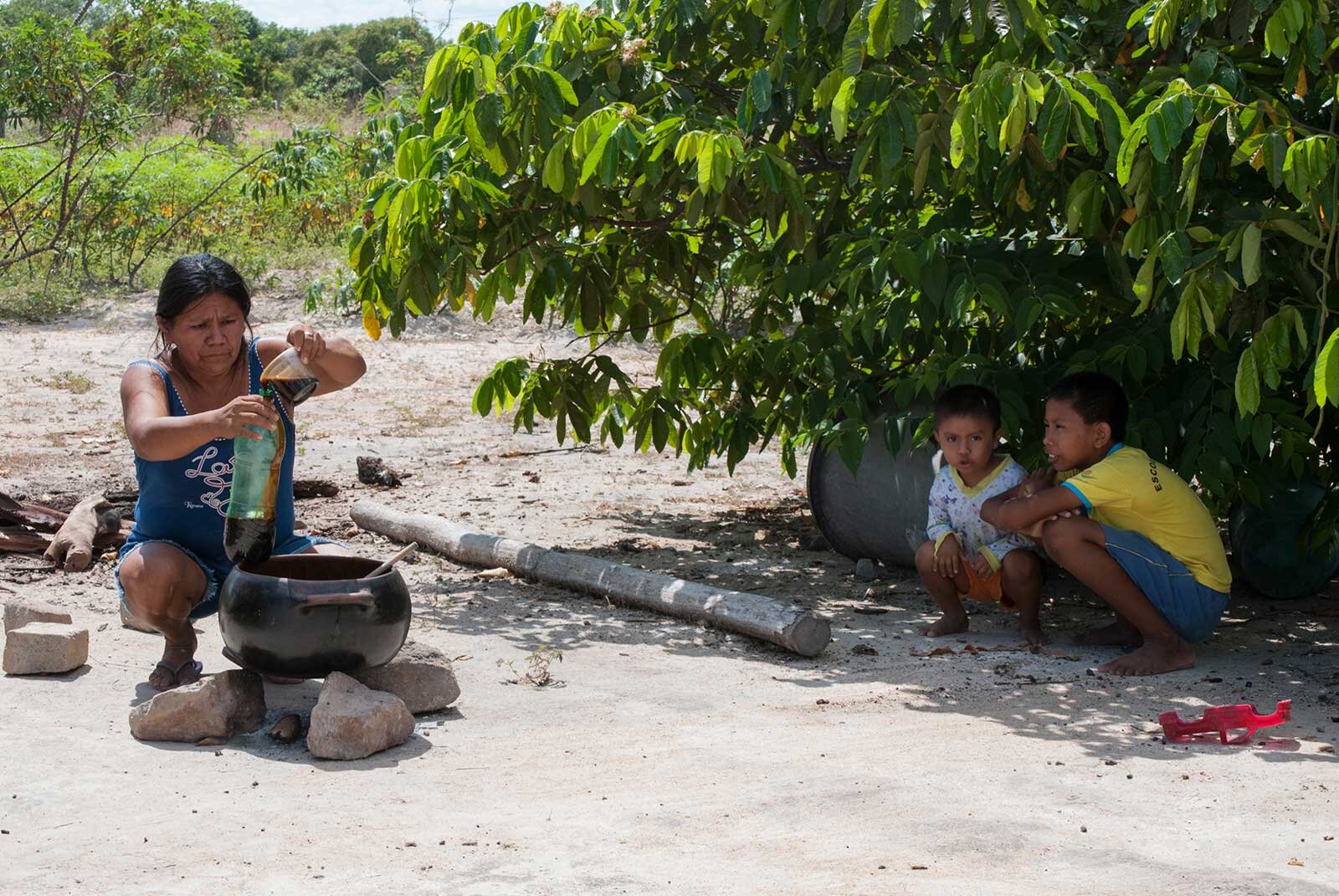
Most families make black tucupi in the village, and have their own manioc plantations. The sun is searing hot at midday. This mother decants black tucupi into fizzy drink bottles. Photo © Tina Leme Scott
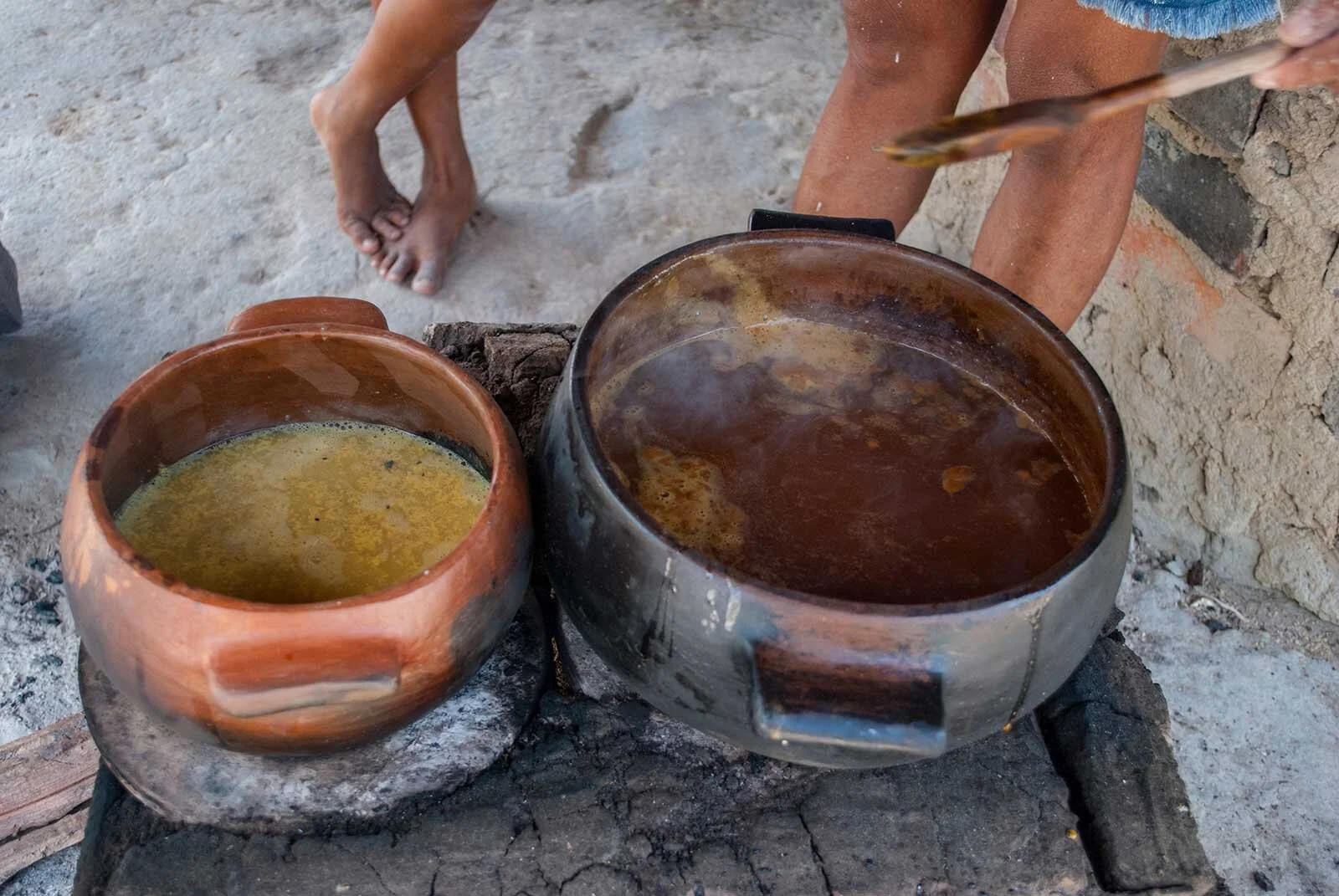
Here they make the black tucupi in clay pots. Tourists can come and try it during an annual festival (Festival das Panelas de Barro) where visitors camp for three days, hiking, swimming and learning about traditional pottery techniques. Photo © Tina Leme Scott
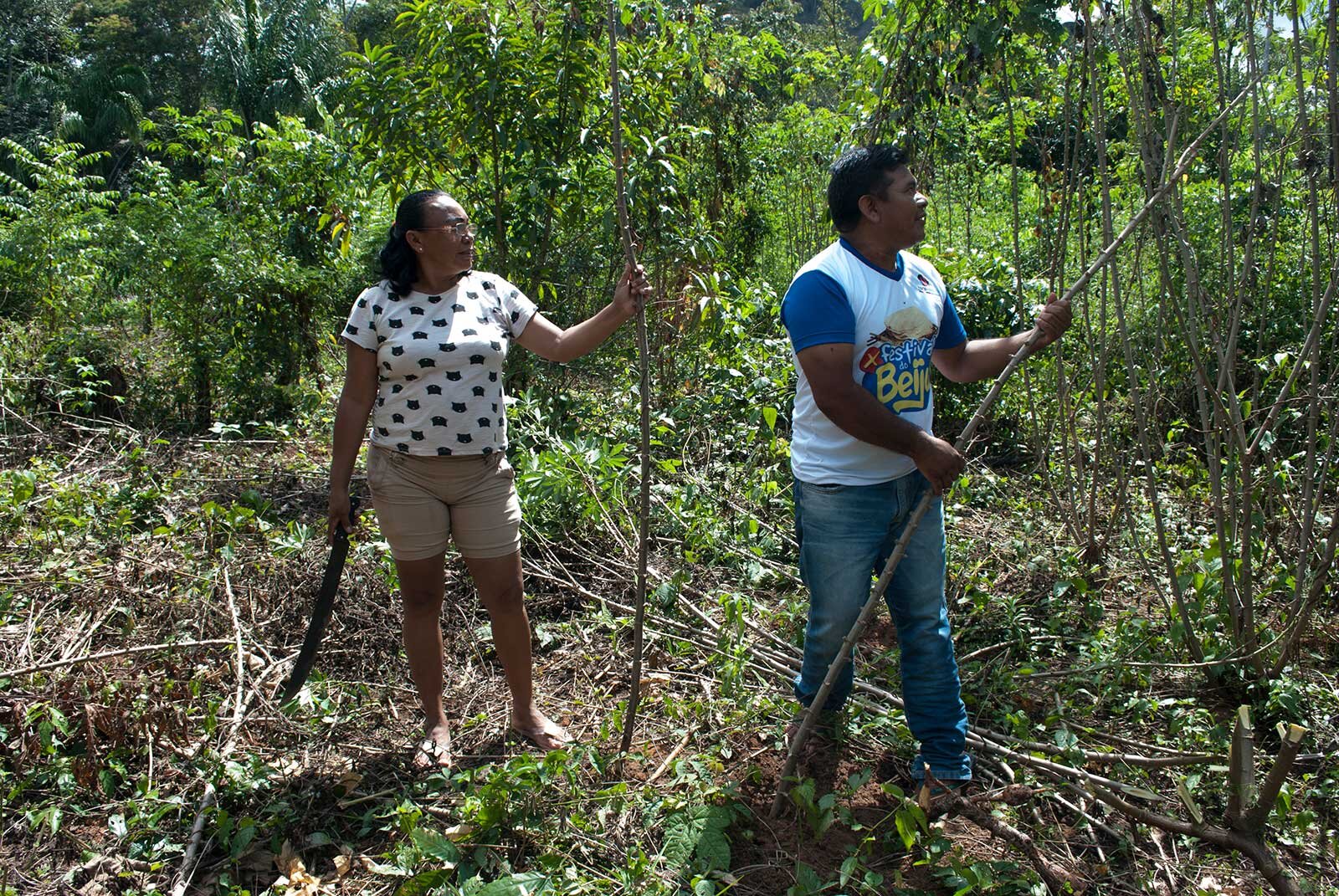
Tina and I also visit Tabalascada - a village on demarcated Wapichana territory just 15 miles outside of Boa Vista (capital of Roraima state). They’re a different ethnic group with a different language to the Macuxi but they also make black tucupi in a very similar way. Photo © Tina Leme Scott
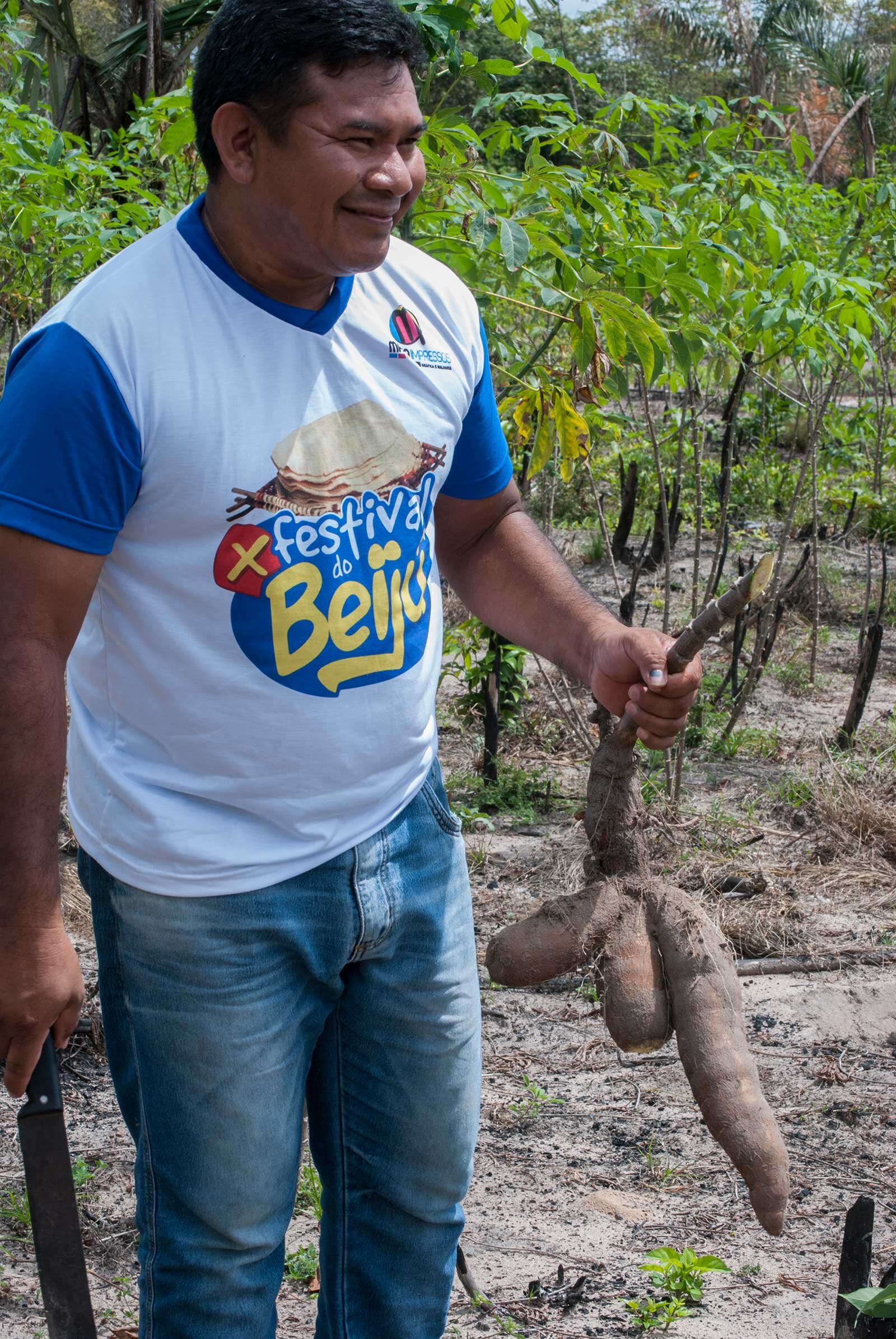
Marcolino da Silva, one of the community leaders, takes us to see the manioc plantation. They change the site of the plantation every five years or so to allow the soil to recover. Indigenous groups in the Amazon have been practicising sustainable agroforestry techniques for millenia. Photo © Tina Leme Scott

The leaves of the manioc plant, sometimes called maniva are edible but like the root they need to be boiled to remove the toxic cyanide. The leaves are the main ingredient in a northern Brazilian stew called maniçoba. Photo © Tina Leme Scott

Lunch under the towering mango trees at Tabalascada. Photo © Tina Leme Scott







































